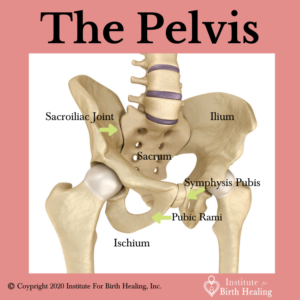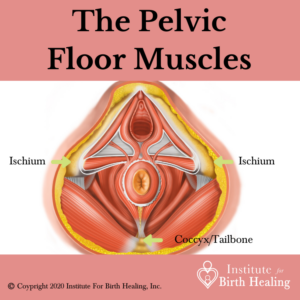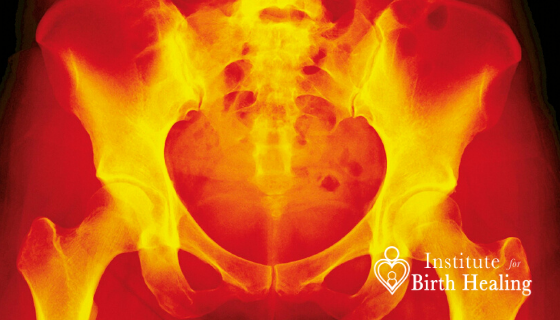Pelvic Trauma in Childbirth
[fusion_builder_container hundred_percent=”no” equal_height_columns=”no” menu_anchor=”” hide_on_mobile=”small-visibility,medium-visibility,large-visibility” class=”” id=”” background_color=”” background_image=”” background_position=”center center” background_repeat=”no-repeat” fade=”no” background_parallax=”none” parallax_speed=”0.3″ video_mp4=”” video_webm=”” video_ogv=”” video_url=”” video_aspect_ratio=”16:9″ video_loop=”yes” video_mute=”yes” overlay_color=”” video_preview_image=”” border_color=”” border_style=”solid” padding_top=”” padding_bottom=”” padding_left=”” padding_right=”” type=”legacy”][fusion_builder_row][fusion_builder_column type=”1_1″ layout=”1_1″ background_position=”left top” background_color=”” border_color=”” border_style=”solid” border_position=”all” spacing=”yes” background_image=”” background_repeat=”no-repeat” padding_top=”” padding_right=”” padding_bottom=”” padding_left=”” margin_top=”0px” margin_bottom=”0px” class=”” id=”” animation_type=”” animation_speed=”0.3″ animation_direction=”left” hide_on_mobile=”small-visibility,medium-visibility,large-visibility” center_content=”no” last=”true” min_height=”” hover_type=”none” link=”” border_sizes_top=”” border_sizes_bottom=”” border_sizes_left=”” border_sizes_right=”” first=”true”][fusion_text columns=”” column_min_width=”” column_spacing=”” rule_style=”default” rule_size=”” rule_color=”” content_alignment_medium=”” content_alignment_small=”” content_alignment=”” hide_on_mobile=”small-visibility,medium-visibility,large-visibility” sticky_display=”normal,sticky” class=”” id=”” margin_top=”” margin_right=”” margin_bottom=”” margin_left=”” font_size=”” fusion_font_family_text_font=”” fusion_font_variant_text_font=”” line_height=”” letter_spacing=”” text_color=”” animation_type=”” animation_direction=”left” animation_speed=”0.3″ animation_offset=””]
Pelvic Trauma in Childbirth
How the body goes about getting a baby out of the body is an extremely amazing feat. It seems downright impossible if you look at the size of a newborn baby and the size of the pelvis, especially the vaginal opening. What does make it possible is the way both the baby’s head and the mom’s pelvis are able to shift their sizes to accommodate. The fetus’ cranial bones overlap to make it smaller and the pelvic inlet and outlet are made larger by the movement of the pelvic bones as the baby passes through.
Most of the time in an uncomplicated birth this process goes about smoothly. However, if the pelvic bones aren’t able to move normally as they should then dysfunctions can occur in the pelvis and the baby’s head gets greater than normal pressures on it as well.
The biggest issue I encounter in working with postpartum women is the lasting effects of abnormal tensions in the ischial bones. These bones are not commonly addressed in standard postpartum care. The lasting effects on women with ischial dysfunctions could be low back and hip pain, pelvic floor muscle weakness, prolapsing of pelvic organs, and painful intercourse.
Let’s take a closer look at the anatomy of the pelvis to see what is happening.
 Our pelvis looks like one continuous ring of bone yet different parts of the pelvis have different names. The pelvis is comprised of two big ilial bones that are the broad, elephant ears shaped bones that connect on either side of the sacrum in the back. This area of connection, where you see little dimples in the low back area on some people is called the sacroiliac joint. If you were to put your hands on your hips at your waist you have contact with the top portion of these ilial bones. When you slide your hands down the outside edge of these bones towards the midline of your body, where your buttocks connect into your upper thigh this is the area that your ischiums are located. When you sit down on a chair the pelvic bones in contact with the chair are your ischial bones. In a picture of the pelvis, the ischial bones are that part of the pelvis that has a hole in the middle. The lower part of the ring of ischial bone goes forward to connect to your symphysis pubis bone that sits low in the front of your body, in the middle of your two groin areas. The bone leading from the ischiums to your pubic bone is called your pubic rami.
Our pelvis looks like one continuous ring of bone yet different parts of the pelvis have different names. The pelvis is comprised of two big ilial bones that are the broad, elephant ears shaped bones that connect on either side of the sacrum in the back. This area of connection, where you see little dimples in the low back area on some people is called the sacroiliac joint. If you were to put your hands on your hips at your waist you have contact with the top portion of these ilial bones. When you slide your hands down the outside edge of these bones towards the midline of your body, where your buttocks connect into your upper thigh this is the area that your ischiums are located. When you sit down on a chair the pelvic bones in contact with the chair are your ischial bones. In a picture of the pelvis, the ischial bones are that part of the pelvis that has a hole in the middle. The lower part of the ring of ischial bone goes forward to connect to your symphysis pubis bone that sits low in the front of your body, in the middle of your two groin areas. The bone leading from the ischiums to your pubic bone is called your pubic rami.
Mechanics of childbirth
During the first stages of labor, the upper part of the pelvis needs to widen to allow the baby’s head to enter into the pelvis. To do this the top portion of the sacrum needs to move backward while the lower part of the sacrum, the tailbone area moves forward. This is called sacral counternutation. In the later stages of labor the opposite sacral motion, called nutation, needs to occur where the tailbone moves backward while at the same time the ischial bones widen out to the side. It is during the last part of labor as the baby is coming out that pressure may be exerted more on one side of the ischium than the other.
As a physical therapist, I understand the mechanics of the joints and muscles and what needs to happen for childbirth. Adding to that knowledge is a skill I have developed to be able to sense or feel what the tissues and bones have gone through during birth or any kind of injury.
As I have worked on postpartum women I have been able to sense how the baby has come out of the pelvis. I have felt many pelvic floors where the tissues are still twisting a bit from the baby’s head rotating to come out. The pelvis may be a bit twisted or rotated as well. Many times the baby’s head has contacted more of one ischium than the other. That side ischium is harder and most of the time is still splaying out to the side more than the other. Sometimes both ischia are still in that splaying out position and need help coming back into midline again.
I had one client that came to me for painful intercourse who had this very issue. When assessing her pelvic floor muscles they were like a tightrope straight across her vaginal opening. When palpating the muscle there was very little give. Normal muscle is like a trampoline, bouncy with pressure. This muscle was like a board, with little give. With the ischia splayed outward, the pelvic floor muscles are stretched to the brink. Just encouraging the ischia to come back together relaxed the muscles to where there was a bounce in the tissues again. She reported having no more problems with intercourse after one session.
Many other clients come to me complaining of one-sided hip and/or low back pain. I find that it is usually the side where the ischium has not come back to its normal midline position. After correcting the boney alignment and working to relax the pelvic floor muscles internally the hip/back problem goes away. One day I saw three different postpartum women all presenting with the same pelvic twisting to the left and right side ischium splayed out to the side. Through my sense of touch, I could feel the baby coming out more into that right ischium. It had more of a traumatized feel and stayed in that opened, birthing position.
Some women with ischial dysfunction complain of significant core weakness. They complain of not being able to fully contract their pelvic floor muscles. Their strength just never seems to improve no matter how long they have been trying to do their Kegel’s. They also feel weak and have little strength around the pelvic region.
With the pelvis being out of alignment the muscles have tensions placed on them. This increased tension or tone in the muscles diminishes its contractile ability sometimes to the point of not being able to contract at all. No matter how many kegels they do they just don’t seem to improve or gain any strength.
The ischiums coming back into their normal midline position helps to bring the pelvic floor muscles back to their normal resting tone so they can fully activate during a contraction. They no longer have abnormal tensions pulling on them so they can contract through their full range of motion. After a session of realigning a woman’s pelvis, she immediately notices an improved strength in her contraction ability.
It is my theory that when the ischia remain in the splayed out position the pelvis is sensing that the labor is still in process. I’ve tuned into urethra’s, bladder’s and uterus’ that are still bearing down energetically like they are pushing out a baby. After I get the ischia in their normal position I check internally with the organs. If they are still energetically pushing out I have the woman tune into those organs and with intention tell them to stay on up and inside. As soon as I start saying these instructions I can feel the organs energetically retracting back, up, and in, like a turtles head going back into its shell. Mobilizing the ischia is only one of many other areas and issues that need to be addressed to help with organ prolapse, yet I feel it’s a very important part of it.
Why does all of this happen?
If the baby’s head fits through the opening in the middle of the pelvis how does the head come out putting more pressure on one ischium than the other? If you were to look down on the pelvis you would think a baby could only come out in midline. However, once the baby’s head is through the pelvic inlet it’s up to the pelvic floor muscles, ischial bones and the tailbone to continue to guide the head through the pelvis. If those three bones are in their normal positions and the muscles and tissues attached to them in a normal state as well, the baby does come on out midline.
 If you look at the pelvis from the underneath side you can see how the tailbone and the ischial bones are the three boney landmarks the baby’s head needs to pass through. What if the pelvic floor muscles on one side had more tone in them and are tighter than the other? The pelvic floor muscles attach on either side of the tailbone and lower part of the sacrum. If one side has more tone than the other side then the sacrum is not going to be able to move backward symmetrically. If the sacrum is anchored on one side this may guide the baby’s head more into the opposite side ischium.
If you look at the pelvis from the underneath side you can see how the tailbone and the ischial bones are the three boney landmarks the baby’s head needs to pass through. What if the pelvic floor muscles on one side had more tone in them and are tighter than the other? The pelvic floor muscles attach on either side of the tailbone and lower part of the sacrum. If one side has more tone than the other side then the sacrum is not going to be able to move backward symmetrically. If the sacrum is anchored on one side this may guide the baby’s head more into the opposite side ischium.
How does the effect of increased tone in the pelvic floor muscles potentially influence or guide the baby’s head out of the pelvis? Increased tone on one side of the pelvic floor muscles may cause the baby’s head to be pushing or guided more into the opposite side ischium. Or is it the muscle tightness prevents opening of the ischium and nutation of the sacrum on that side causing the baby’s head to shift towards the tight side? Or is it the position the laboring person is in that influences the pressure on the ischia. Either way, the ischia are still getting uneven tensions placed upon them leading to increased trauma and dysfunction in the bones and pelvic floor tissues.
Another player in this mechanic could be the sacroiliac joint. If the sacrum is unable to nutate on one side because the sacrum is not sitting in the joint properly this can prevent it from opening up and possibly cause a shifting of the baby’s head toward one ischium more than the other.
I highly recommend any pregnant woman get their pelvis and sacroiliac joints assessed for normal mobility prior to going into labor. One of my trained Birth Healing Specialist can help with this. They will be able to help you determine if your sacrum and pelvic floor muscles have the ability to move and release as it should prior to going into labor. It could help with a smoother delivery.
It’s hard to say if we can prevent this uneven pressure on the ischiums. My guess is if women had their sacroiliac joints assessed for mobility and their pelvic floor muscles assessed for relaxation ability prior to childbirth then maybe we could help the baby find a more midline approach out of the pelvis. While it is easy to assess sacroiliac joint mobility, it is not common practice for practitioners to do any internal work during pregnancy. I’m wondering if routine checking of woman’s pelvic floor muscle tension in the third trimester, and treating increased tone issues, might be helpful for mom’s and baby’s to have an easier birth experience.
For health care practitioners understanding the mechanics of the pelvis and pelvic floor muscles are imperative in helping moms have as easy of a birth as possible. For pregnant moms, any dysfunctions or problems in your low back or pelvis need to be addressed prior to going into labor. Then your baby can have a smoother, hopefully, easier transition through your pelvis. I am a huge proponent of making sure the pelvis and pelvic floor muscles are in good working order prior to labor beginning. If we can help make the passageway work more smoothly both mother and baby will experience fewer traumas. And don’t we all want that!
[/fusion_text][/fusion_builder_column][/fusion_builder_row][/fusion_builder_container][fusion_builder_container type=”flex” hundred_percent=”no” hundred_percent_height=”no” min_height=”” hundred_percent_height_scroll=”no” align_content=”stretch” flex_align_items=”flex-start” flex_justify_content=”flex-start” flex_column_spacing=”” hundred_percent_height_center_content=”yes” equal_height_columns=”no” container_tag=”div” menu_anchor=”” hide_on_mobile=”small-visibility,medium-visibility,large-visibility” status=”published” publish_date=”” class=”” id=”” link_color=”” link_hover_color=”” border_sizes=”” border_sizes_top=”” border_sizes_right=”” border_sizes_bottom=”” border_sizes_left=”” border_color=”” border_style=”solid” spacing_medium=”” margin_top_medium=”” margin_bottom_medium=”” spacing_small=”” margin_top_small=”” margin_bottom_small=”” margin_top=”” margin_bottom=”” padding_dimensions_medium=”” padding_top_medium=”” padding_right_medium=”” padding_bottom_medium=”” padding_left_medium=”” padding_dimensions_small=”” padding_top_small=”” padding_right_small=”” padding_bottom_small=”” padding_left_small=”” padding_top=”” padding_right=”” padding_bottom=”” padding_left=”” box_shadow=”no” box_shadow_vertical=”” box_shadow_horizontal=”” box_shadow_blur=”0″ box_shadow_spread=”0″ box_shadow_color=”” box_shadow_style=”” z_index=”” overflow=”” gradient_start_color=”” gradient_end_color=”” gradient_start_position=”0″ gradient_end_position=”100″ gradient_type=”linear” radial_direction=”center center” linear_angle=”180″ background_color=”” background_image=”” background_position=”center center” background_repeat=”no-repeat” fade=”no” background_parallax=”none” enable_mobile=”no” parallax_speed=”0.3″ background_blend_mode=”none” video_mp4=”” video_webm=”” video_ogv=”” video_url=”” video_aspect_ratio=”16:9″ video_loop=”yes” video_mute=”yes” video_preview_image=”” absolute=”off” absolute_devices=”small,medium,large” sticky=”off” sticky_devices=”small-visibility,medium-visibility,large-visibility” sticky_background_color=”” sticky_height=”” sticky_offset=”” sticky_transition_offset=”0″ scroll_offset=”0″ animation_type=”” animation_direction=”left” animation_speed=”0.3″ animation_offset=”” filter_hue=”0″ filter_saturation=”100″ filter_brightness=”100″ filter_contrast=”100″ filter_invert=”0″ filter_sepia=”0″ filter_opacity=”100″ filter_blur=”0″ filter_hue_hover=”0″ filter_saturation_hover=”100″ filter_brightness_hover=”100″ filter_contrast_hover=”100″ filter_invert_hover=”0″ filter_sepia_hover=”0″ filter_opacity_hover=”100″ filter_blur_hover=”0″][fusion_builder_row][fusion_builder_column type=”1_1″ layout=”1_1″ align_self=”auto” content_layout=”column” align_content=”flex-start” content_wrap=”wrap” spacing=”” center_content=”no” link=”” target=”_self” min_height=”” hide_on_mobile=”small-visibility,medium-visibility,large-visibility” sticky_display=”normal,sticky” class=”” id=”” type_medium=”” type_small=”” order_medium=”0″ order_small=”0″ dimension_spacing_medium=”” dimension_spacing_small=”” dimension_spacing=”” dimension_margin_medium=”” dimension_margin_small=”” margin_top=”” margin_bottom=”” padding_medium=”” padding_small=”” padding_top=”” padding_right=”” padding_bottom=”” padding_left=”” hover_type=”none” border_sizes=”” border_color=”” border_style=”solid” border_radius=”” box_shadow=”no” dimension_box_shadow=”” box_shadow_blur=”0″ box_shadow_spread=”0″ box_shadow_color=”” box_shadow_style=”” background_type=”single” gradient_start_color=”” gradient_end_color=”” gradient_start_position=”0″ gradient_end_position=”100″ gradient_type=”linear” radial_direction=”center center” linear_angle=”180″ background_color=”” background_image=”” background_image_id=”” background_position=”left top” background_repeat=”no-repeat” background_blend_mode=”none” animation_type=”” animation_direction=”left” animation_speed=”0.3″ animation_offset=”” filter_type=”regular” filter_hue=”0″ filter_saturation=”100″ filter_brightness=”100″ filter_contrast=”100″ filter_invert=”0″ filter_sepia=”0″ filter_opacity=”100″ filter_blur=”0″ filter_hue_hover=”0″ filter_saturation_hover=”100″ filter_brightness_hover=”100″ filter_contrast_hover=”100″ filter_invert_hover=”0″ filter_sepia_hover=”0″ filter_opacity_hover=”100″ filter_blur_hover=”0″ last=”true” border_position=”all” first=”true”][fusion_tagline_box content_alignment=”left” link=”https://instituteforbirthhealing.com/six-key-assessment/” button=”DOWNLOAD NOW” linktarget=”_blank” modal=”” button_size=”” button_type=”” button_border_radius=”” buttoncolor=”default” title=”V29tZW4ncyBIZWFsdGggUHJhY3RpdGlvbmVycw==” description=”R2V0IEJldHRlciBQZWx2aWMgRmxvb3IgQ29udHJhY3Rpb25zIEluIE9ORSBTRVNTSU9OIA==” hide_on_mobile=”small-visibility,medium-visibility,large-visibility” class=”” id=”” backgroundcolor=”” shadow=”no” shadowopacity=”0.7″ border=”1″ bordercolor=”” highlightposition=”left” margin_top=”” margin_bottom=”” animation_type=”” animation_direction=”left” animation_speed=”0.3″ animation_offset=””]
Grab the Download to Learn How Using the Six Key Assessment Tools and Techniques
[/fusion_tagline_box][/fusion_builder_column][/fusion_builder_row][/fusion_builder_container]

